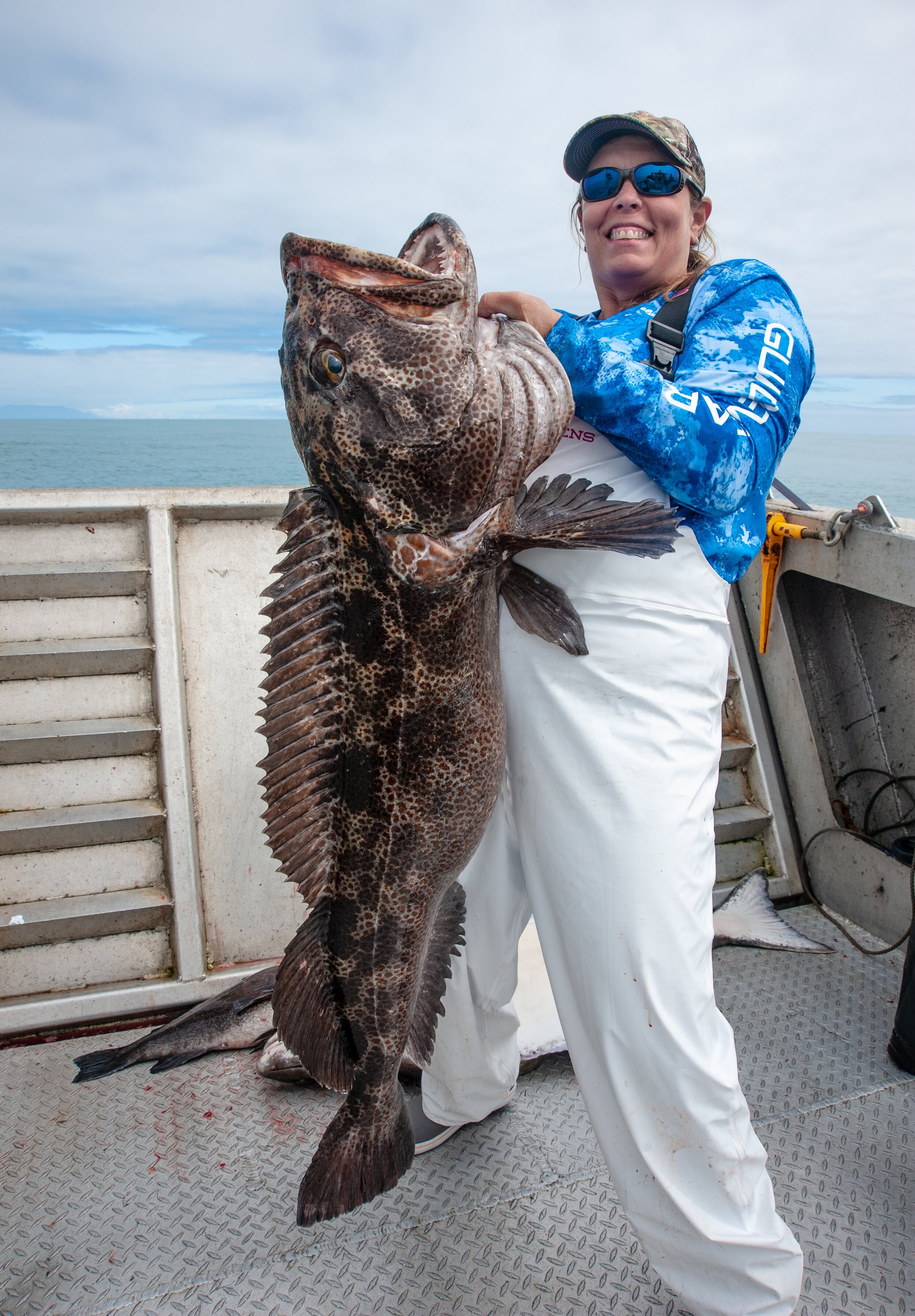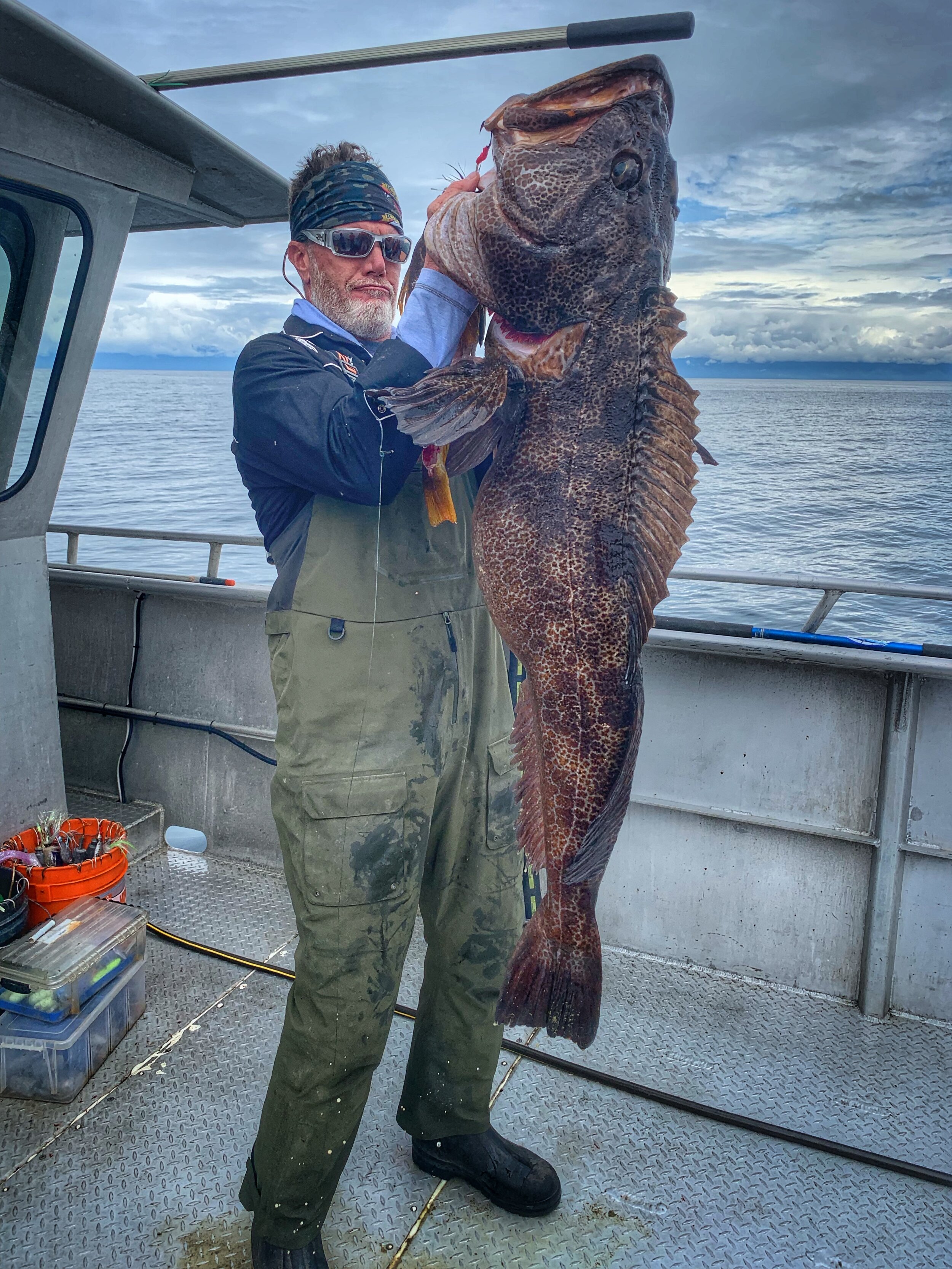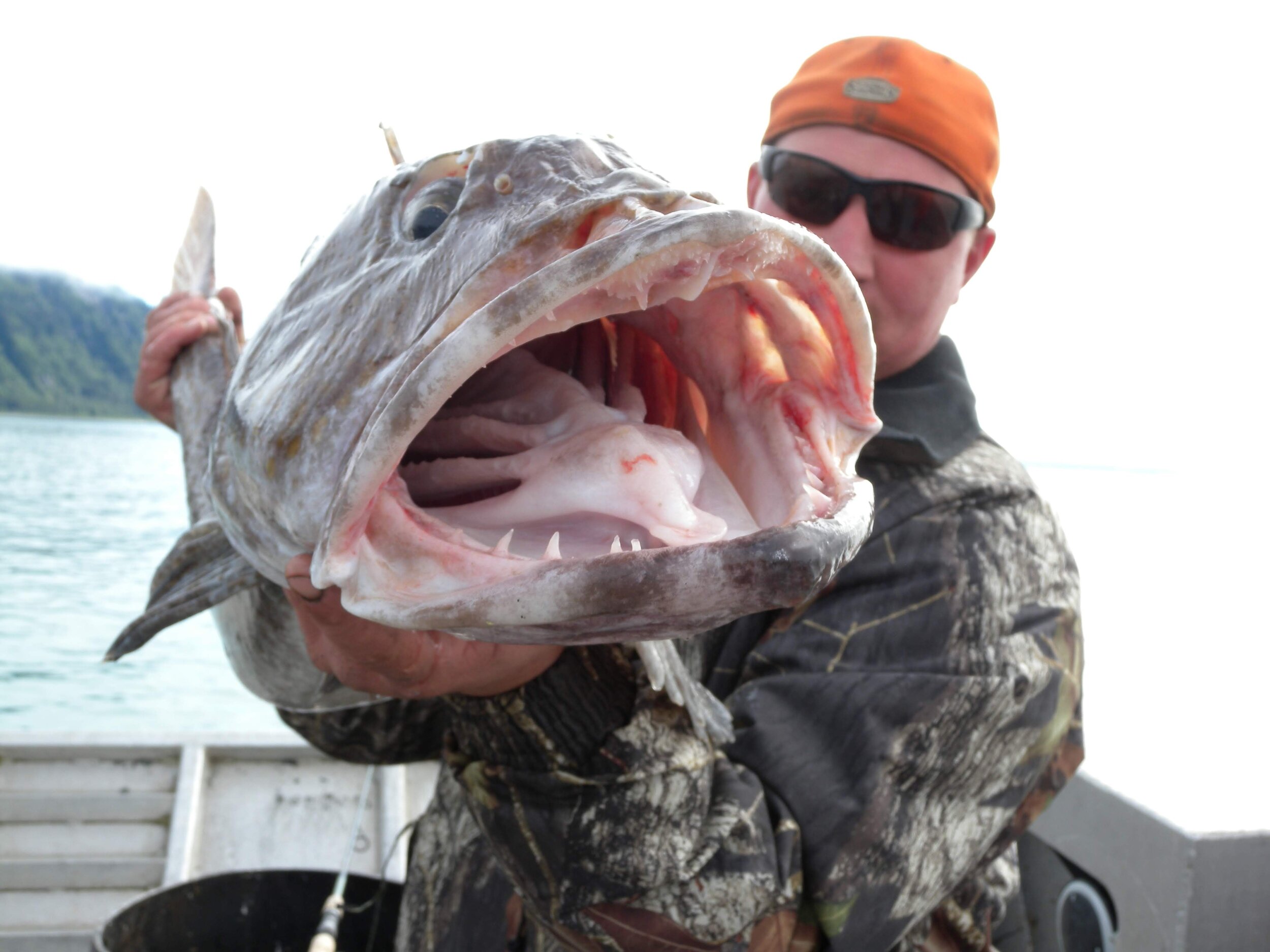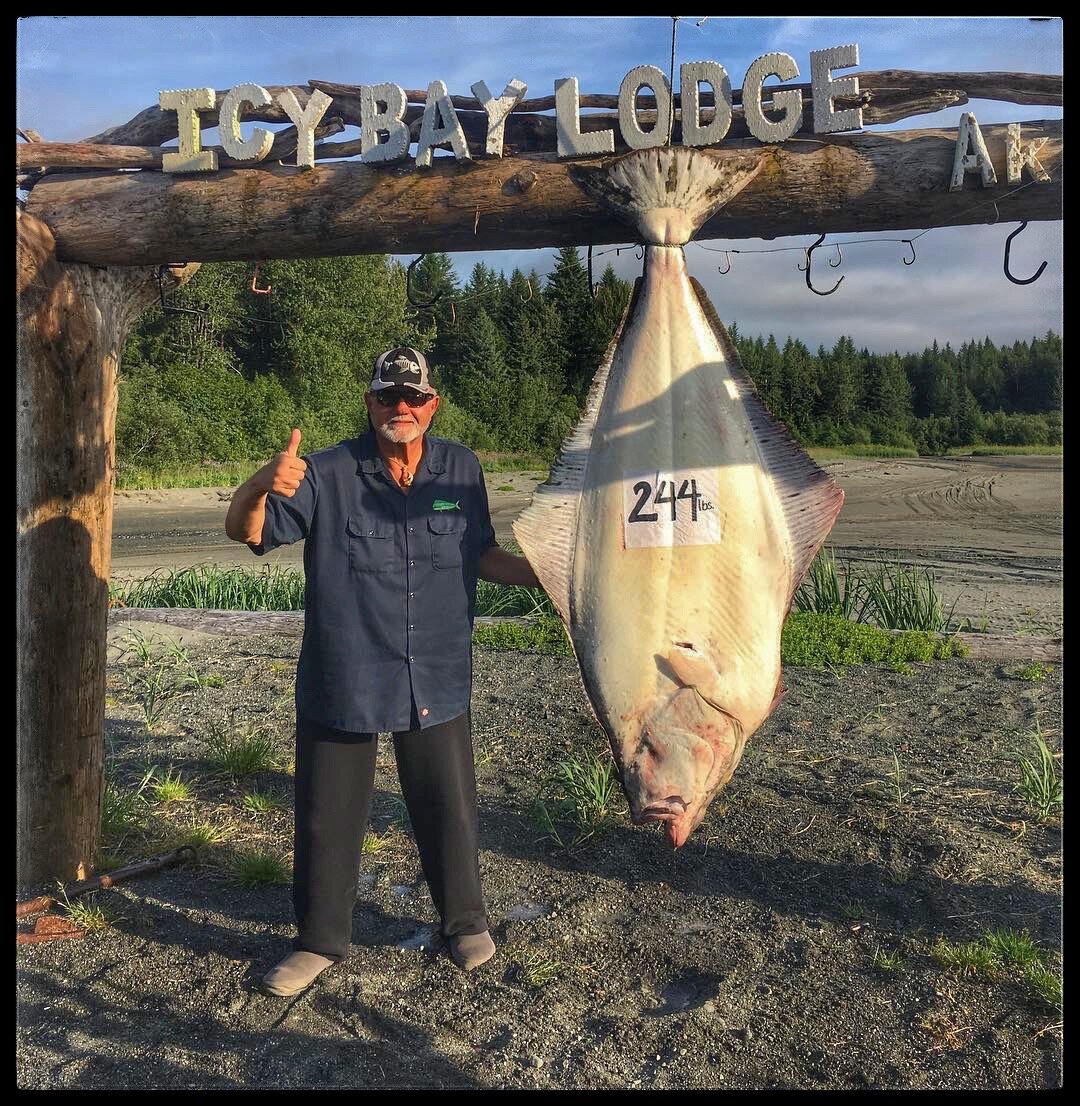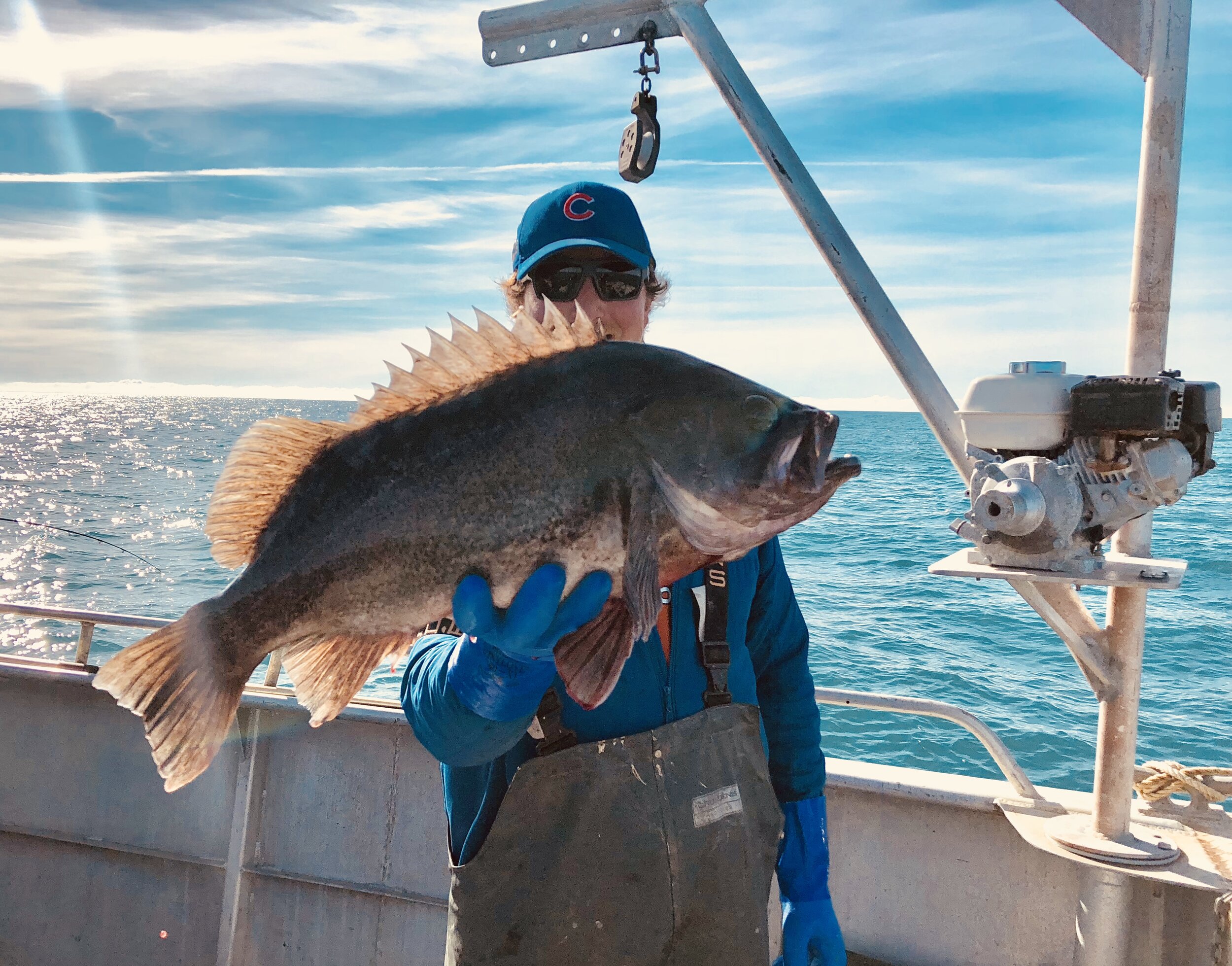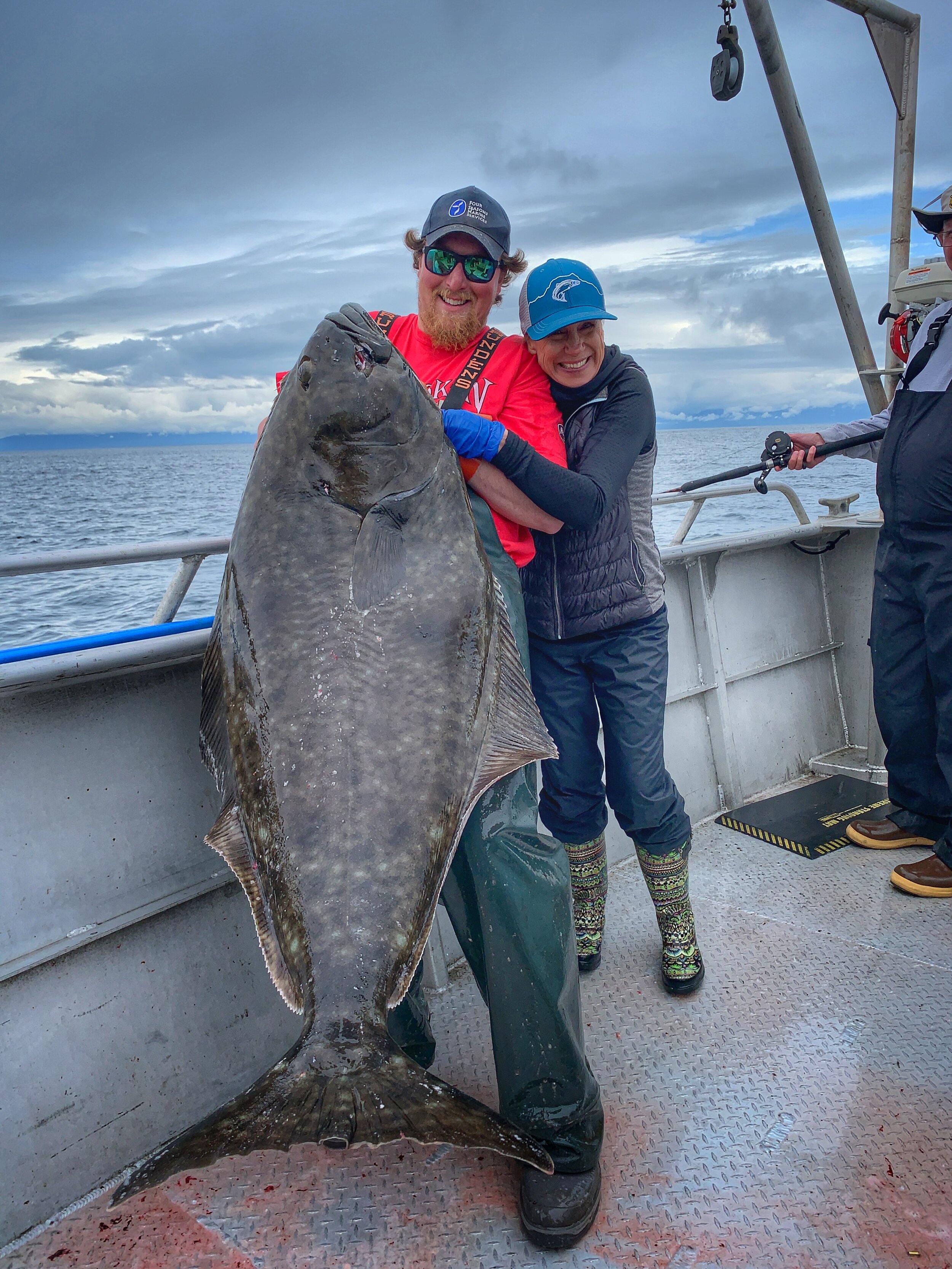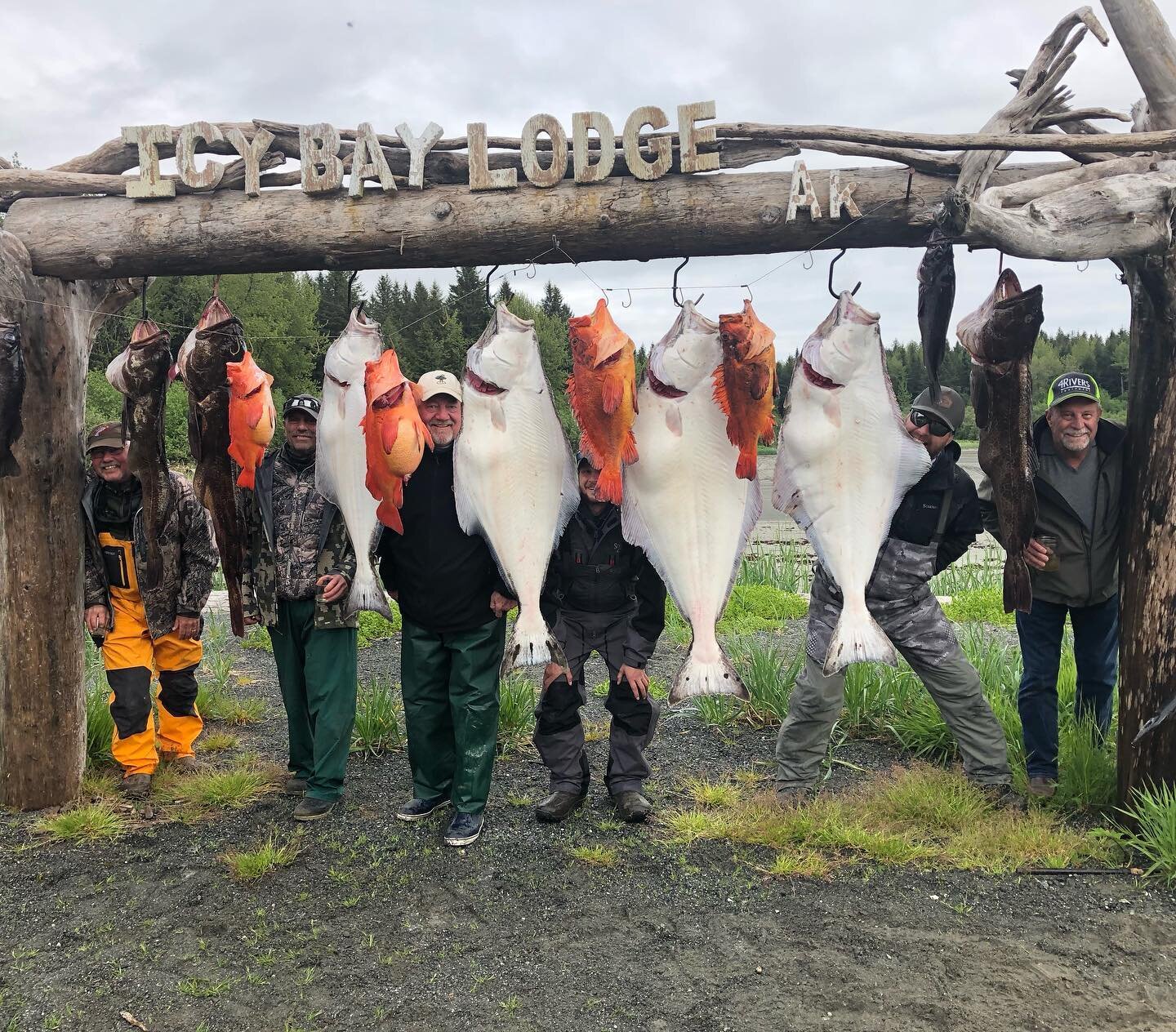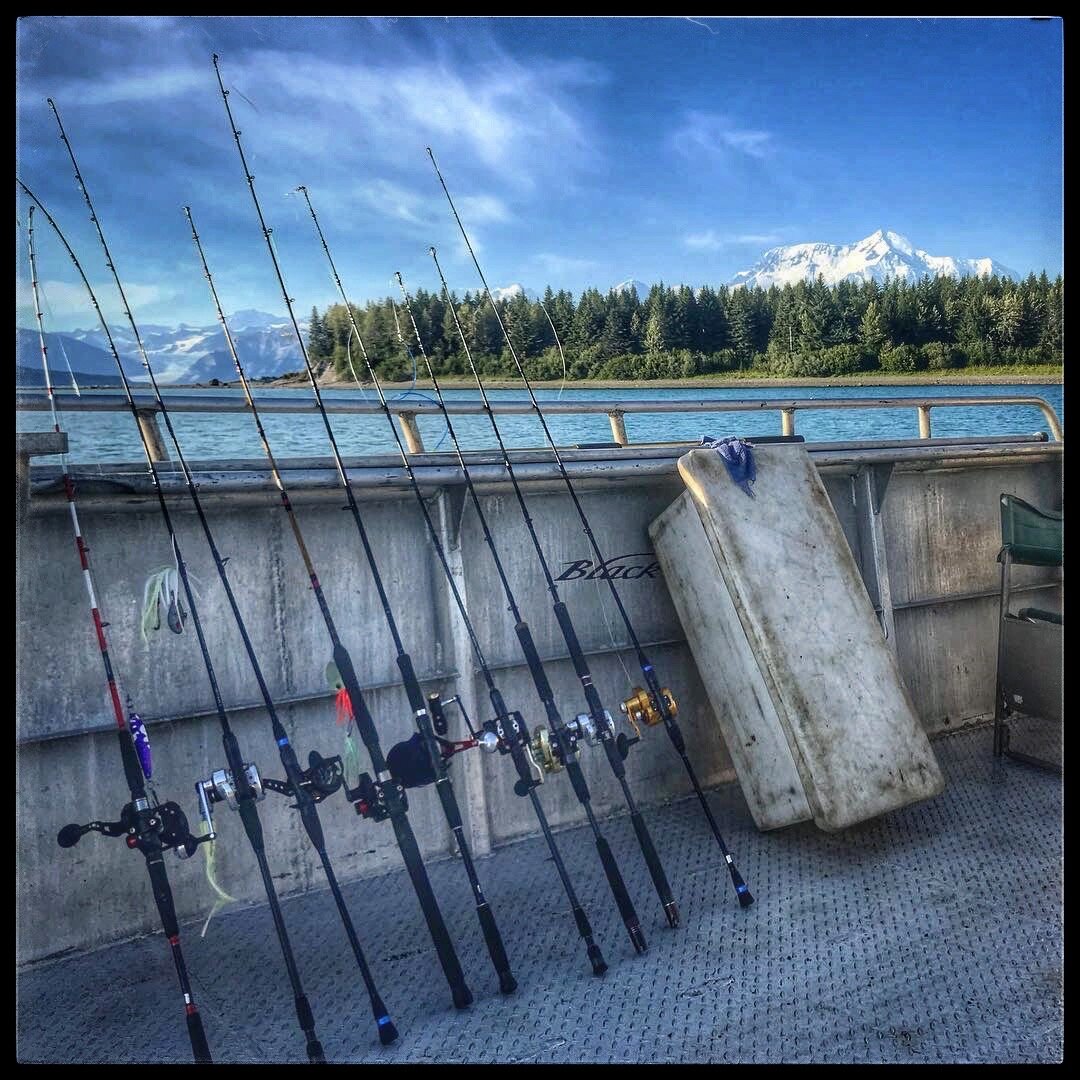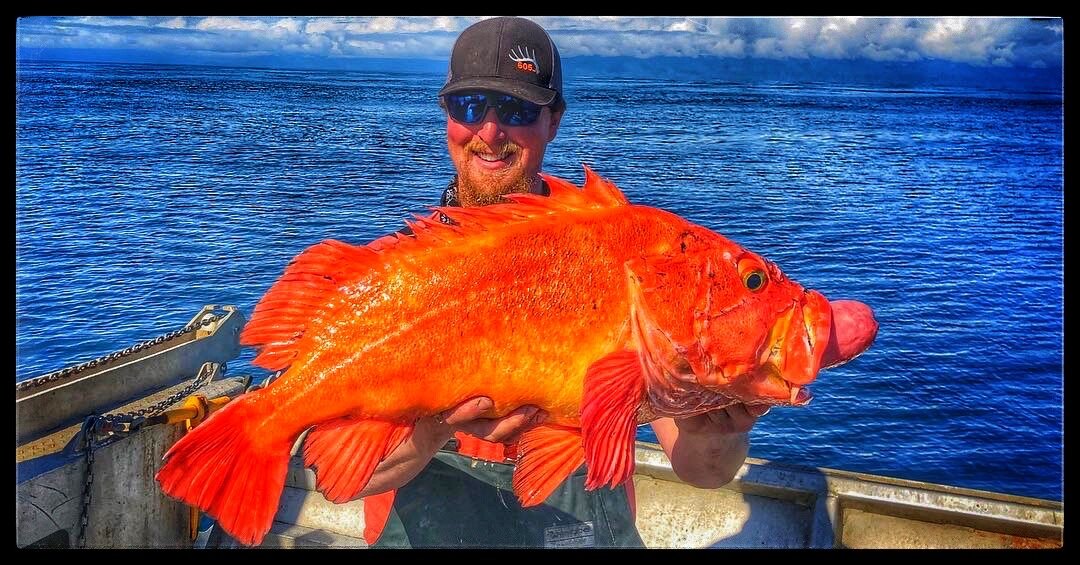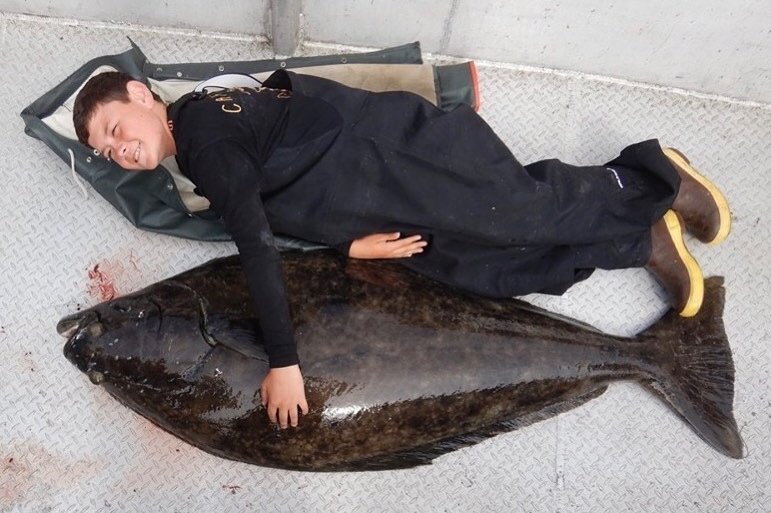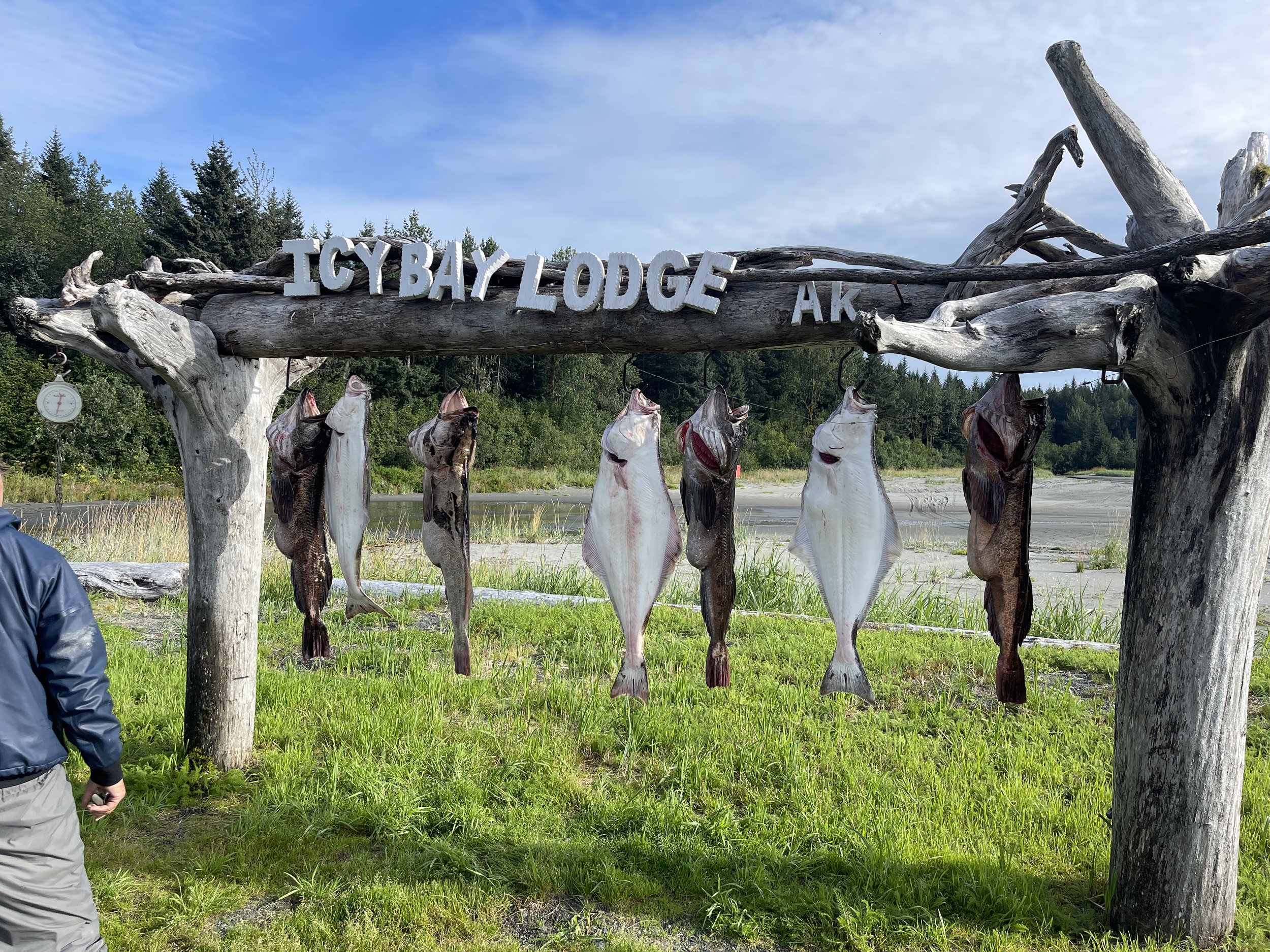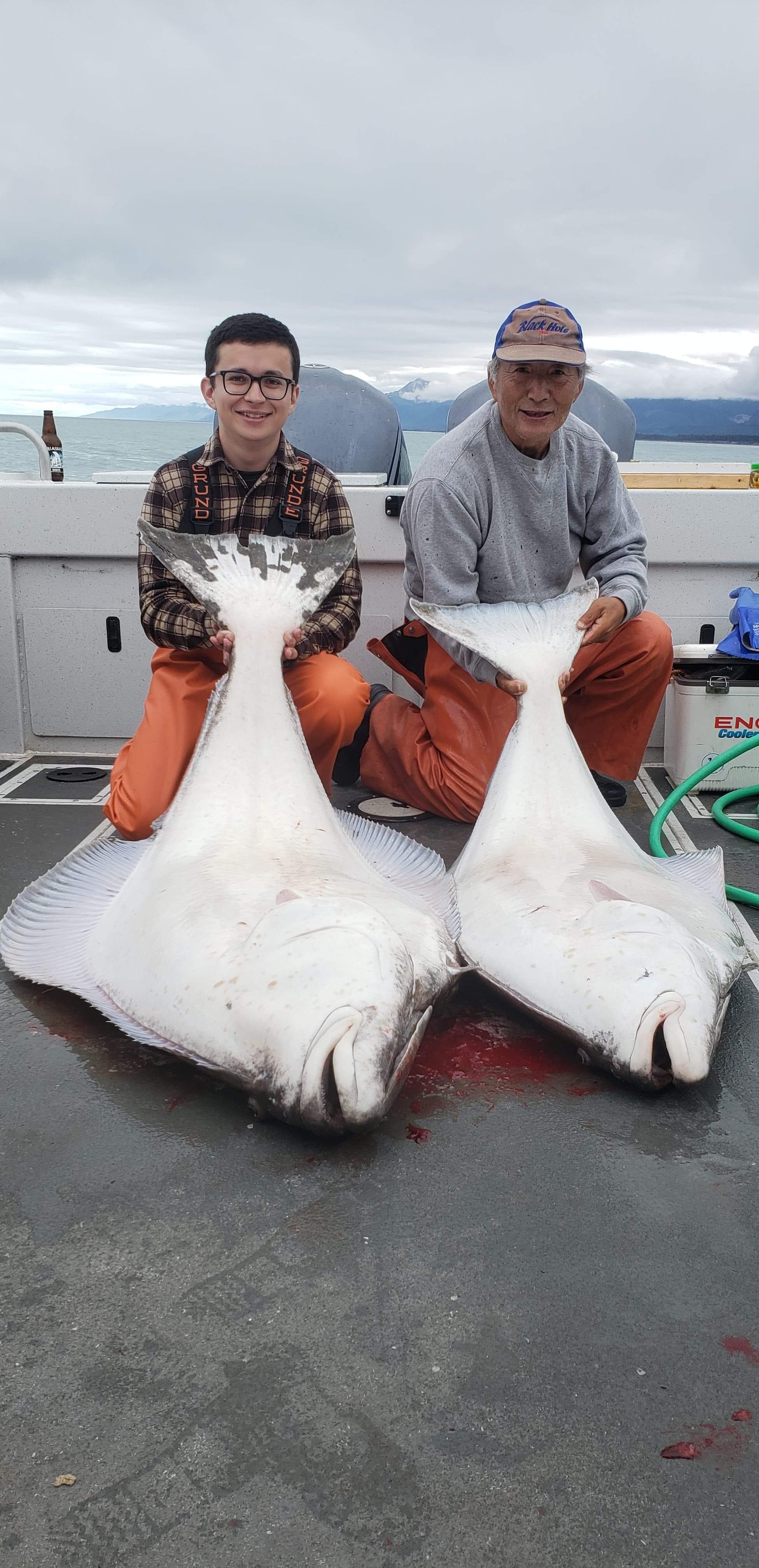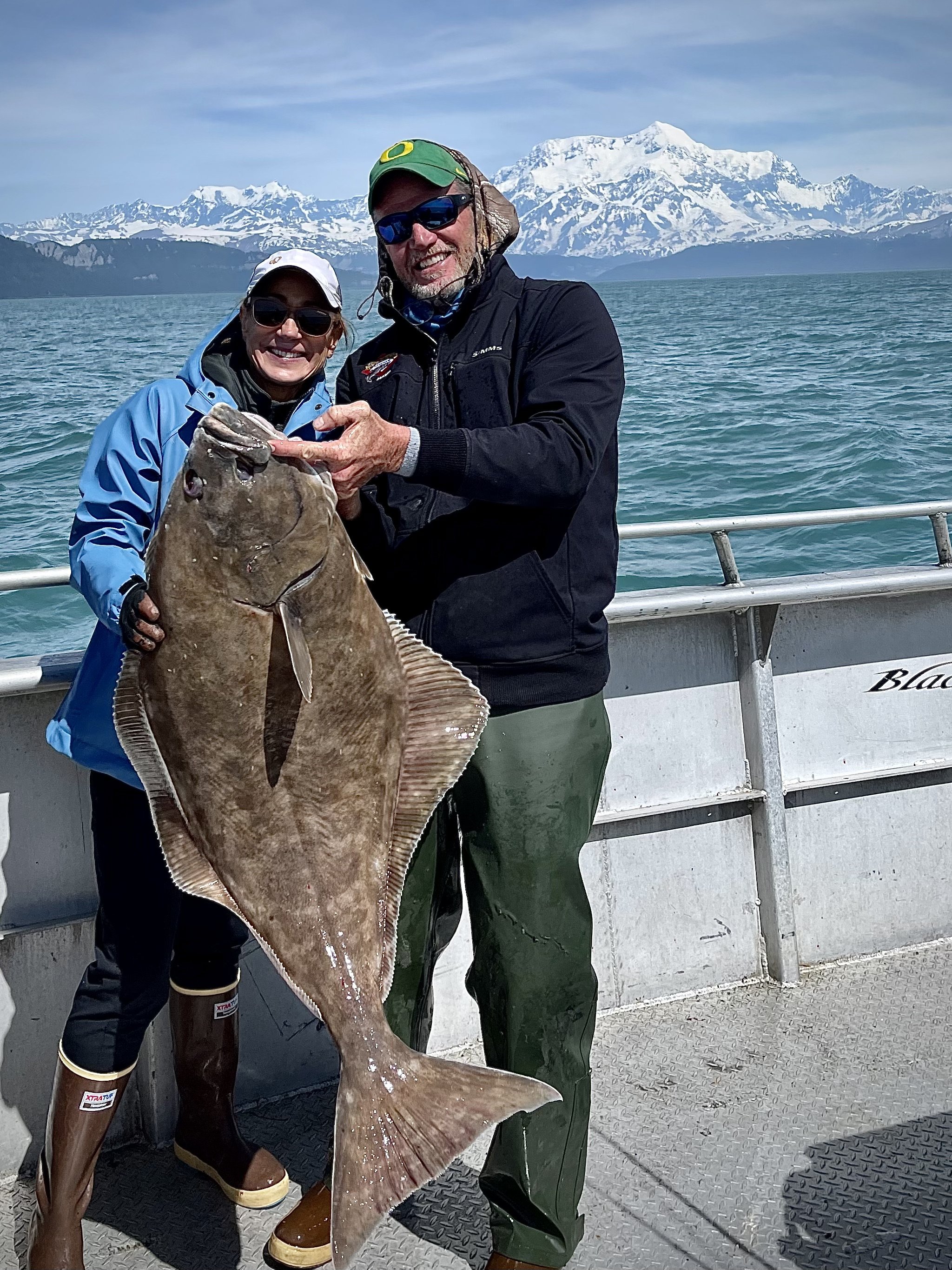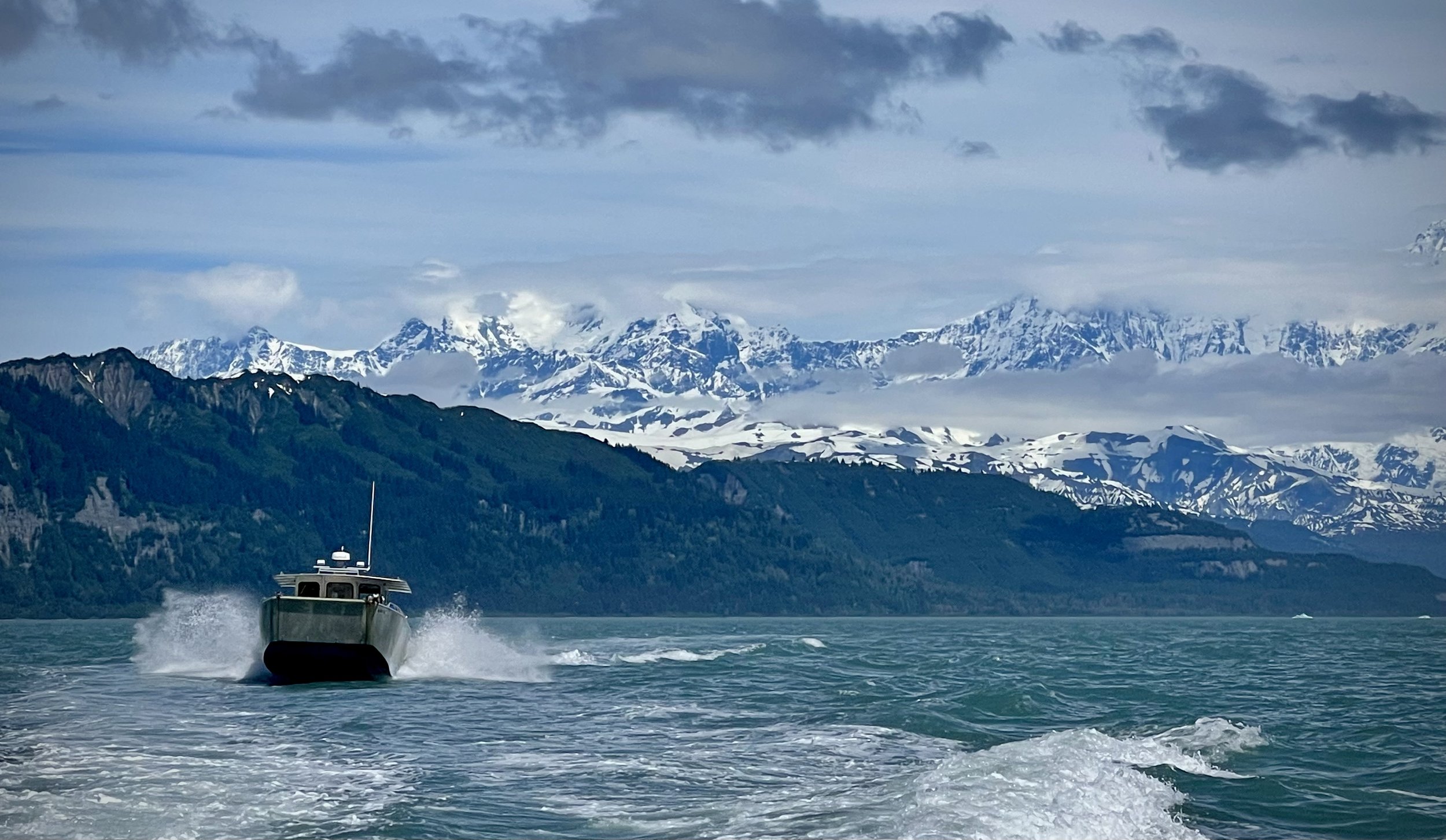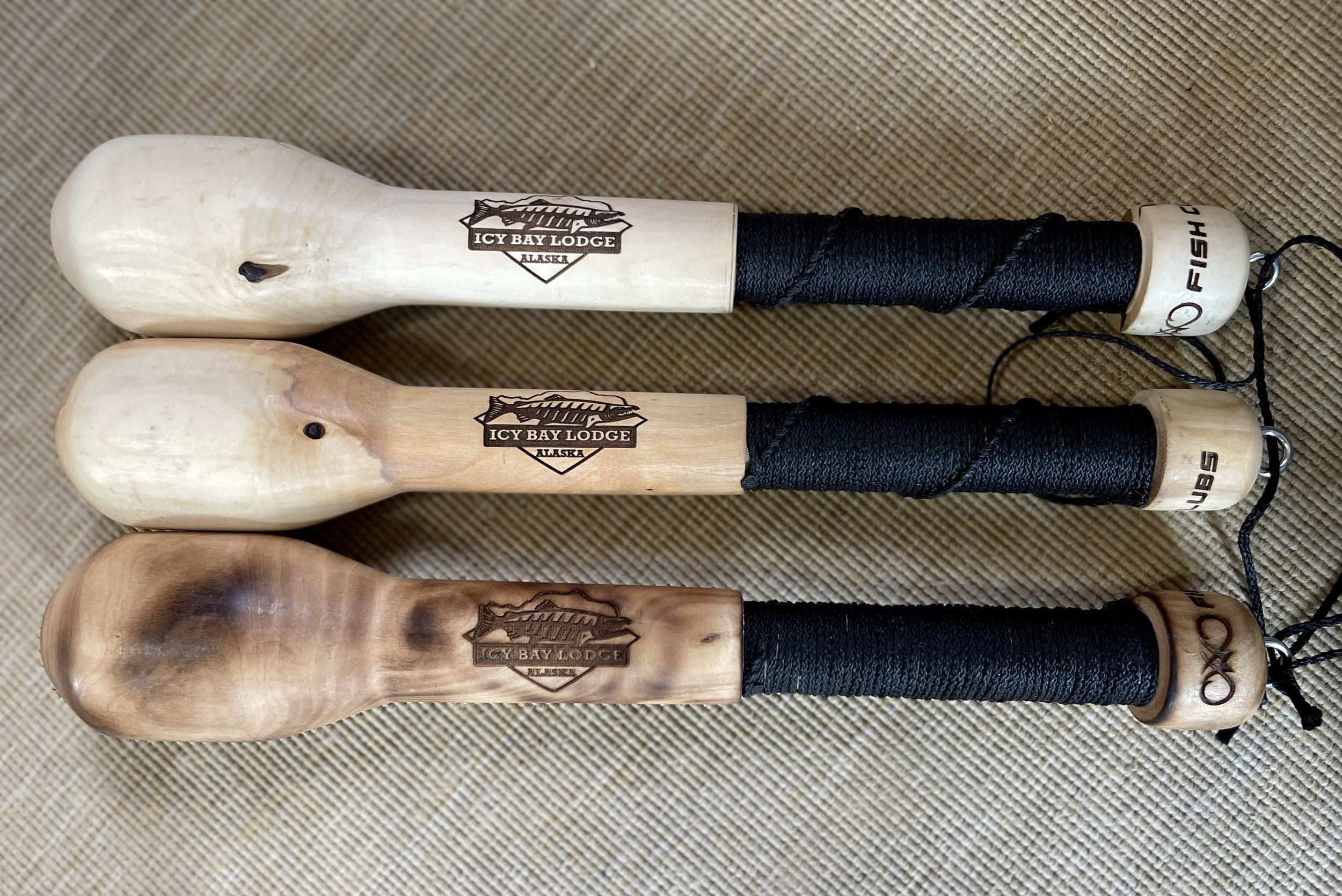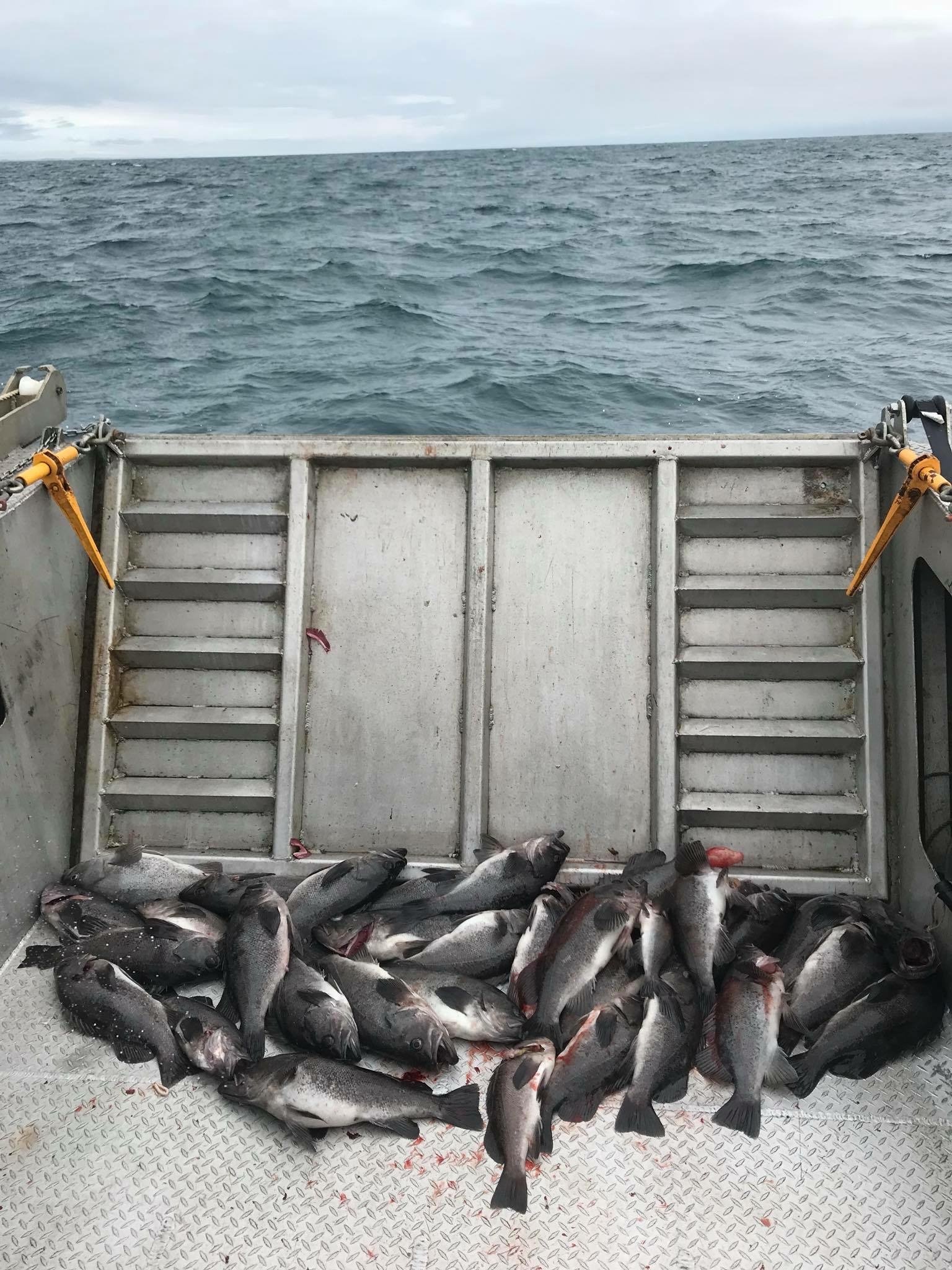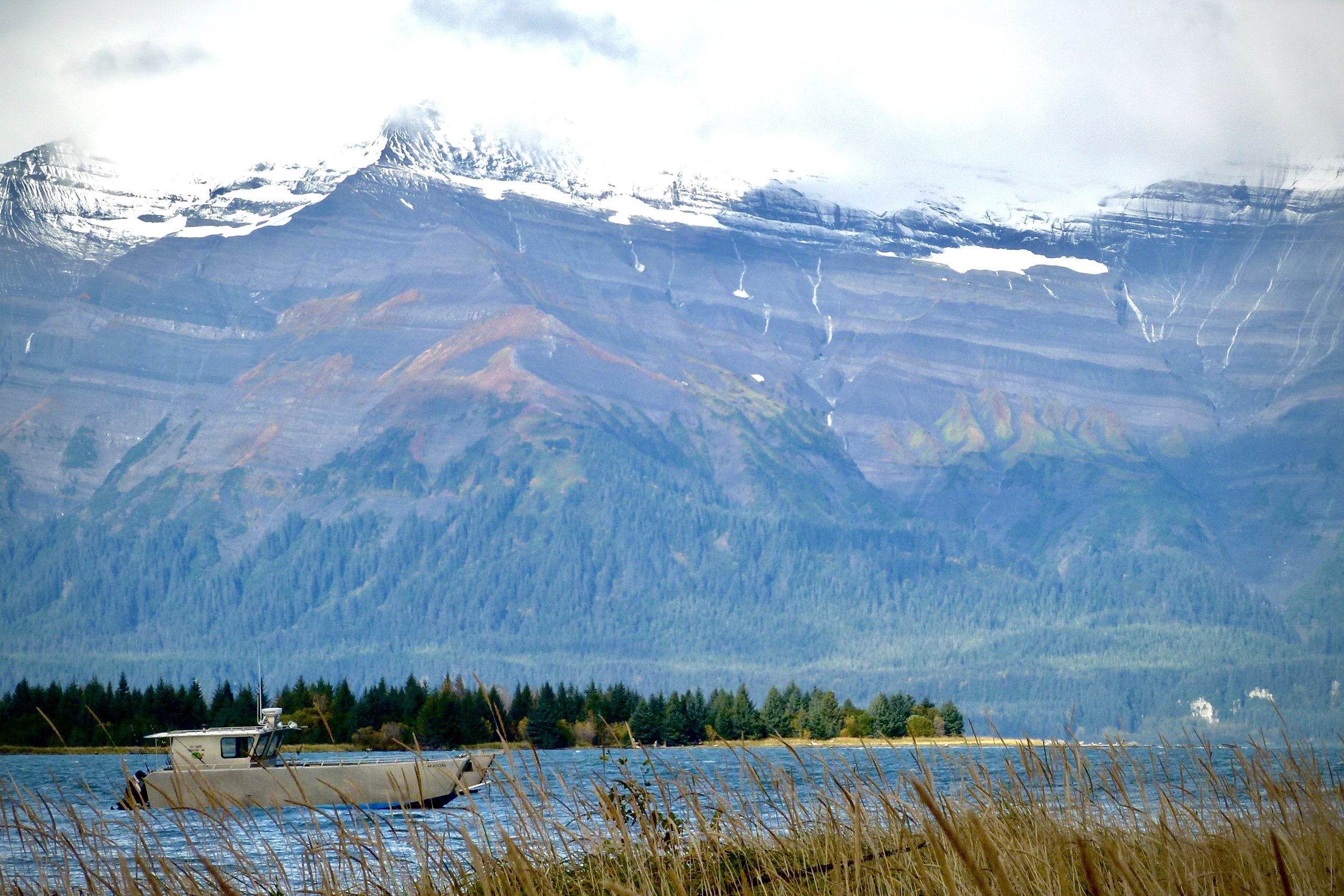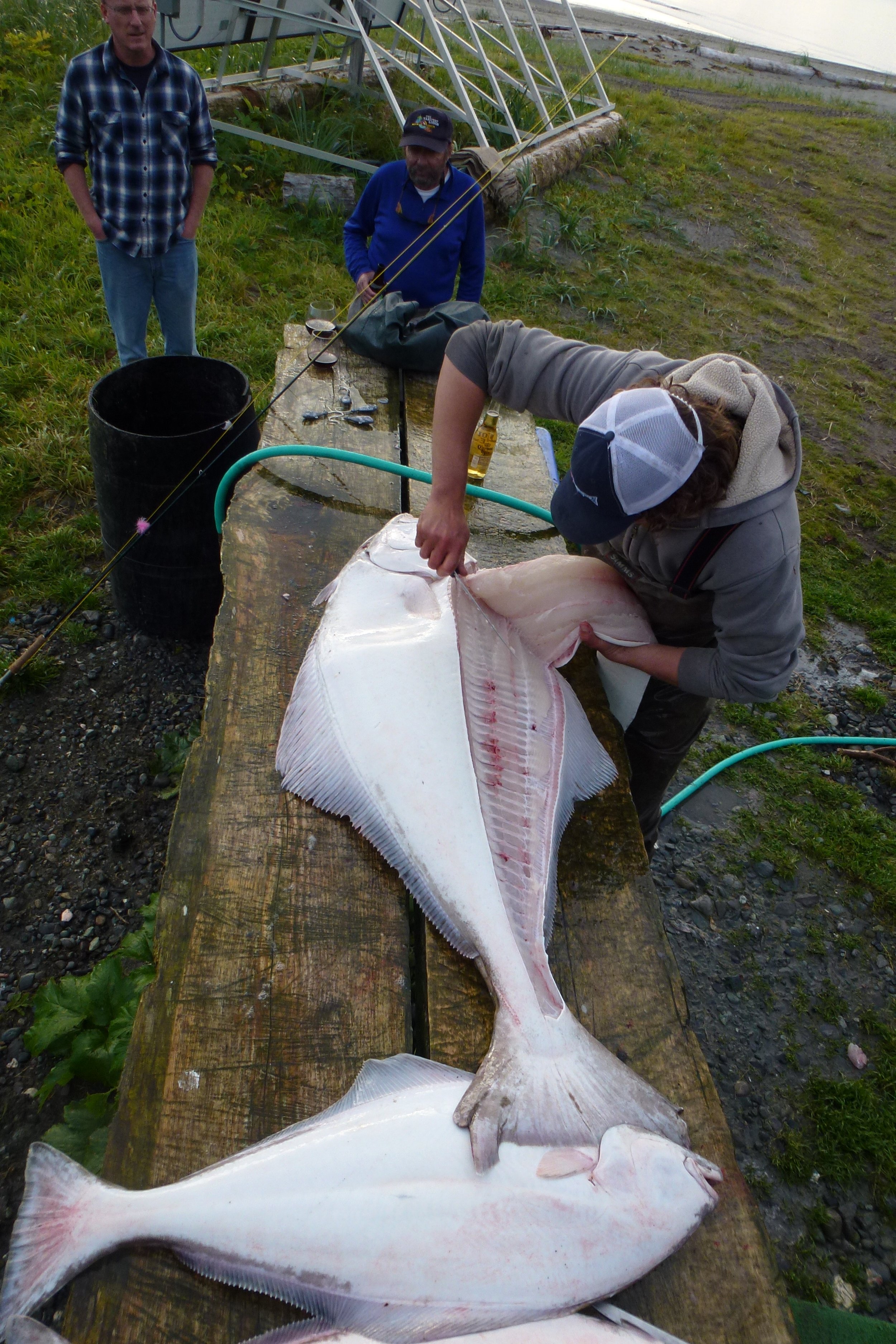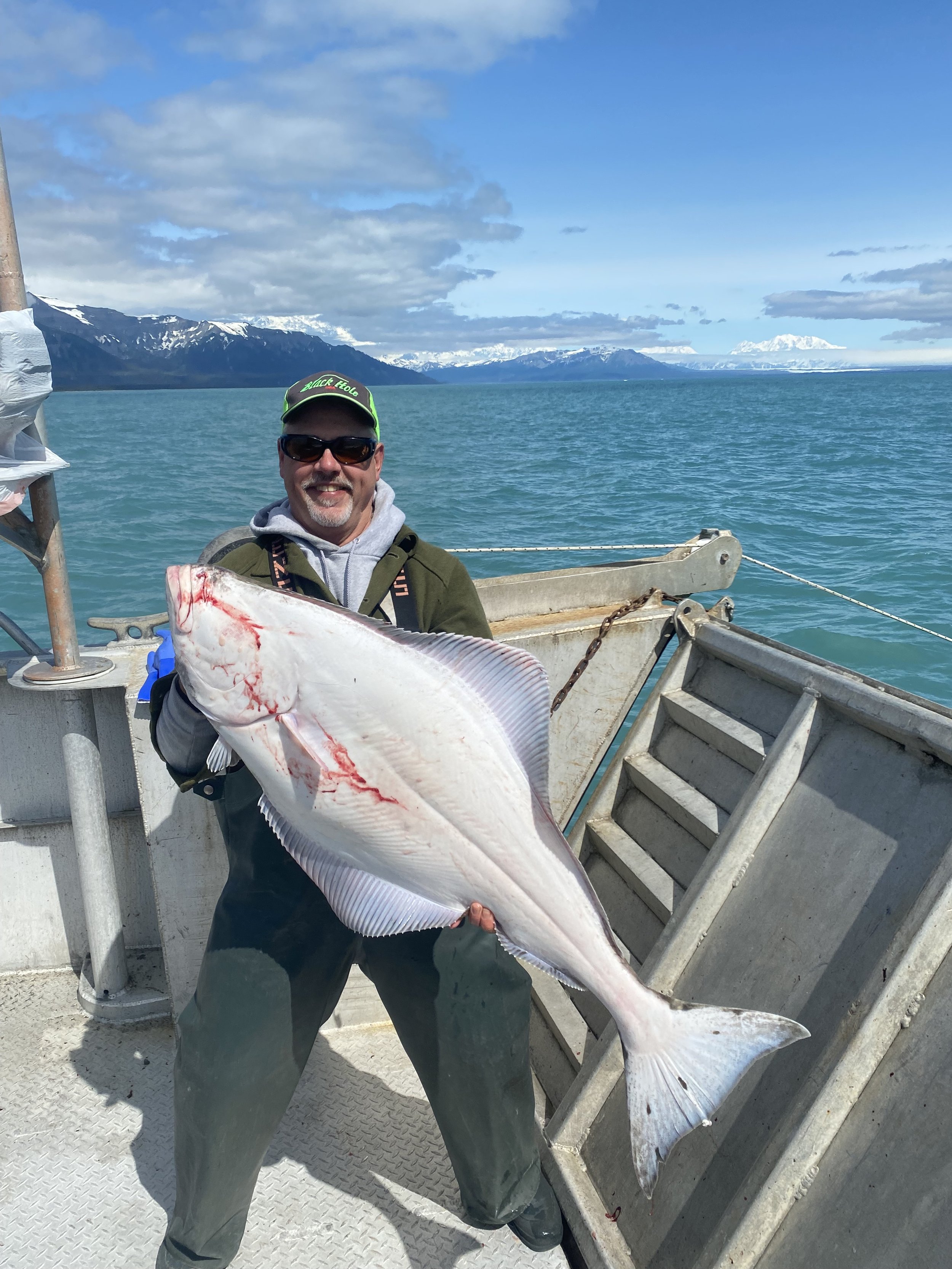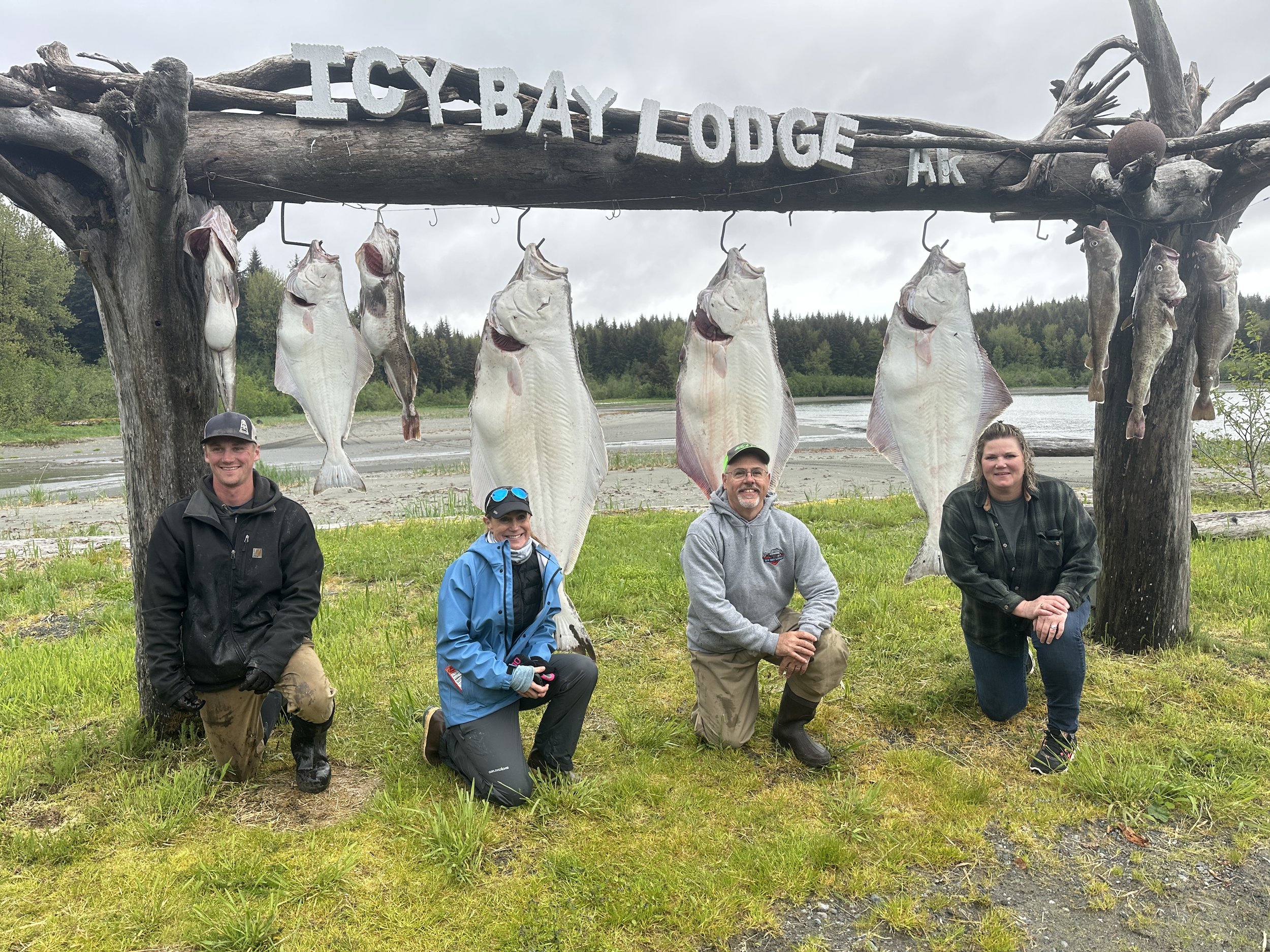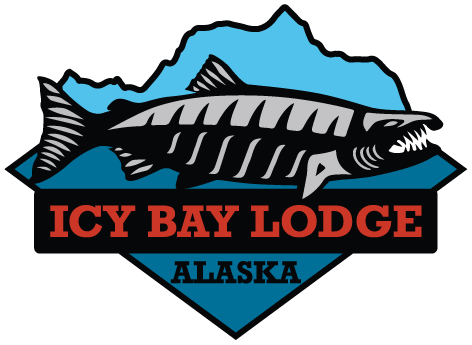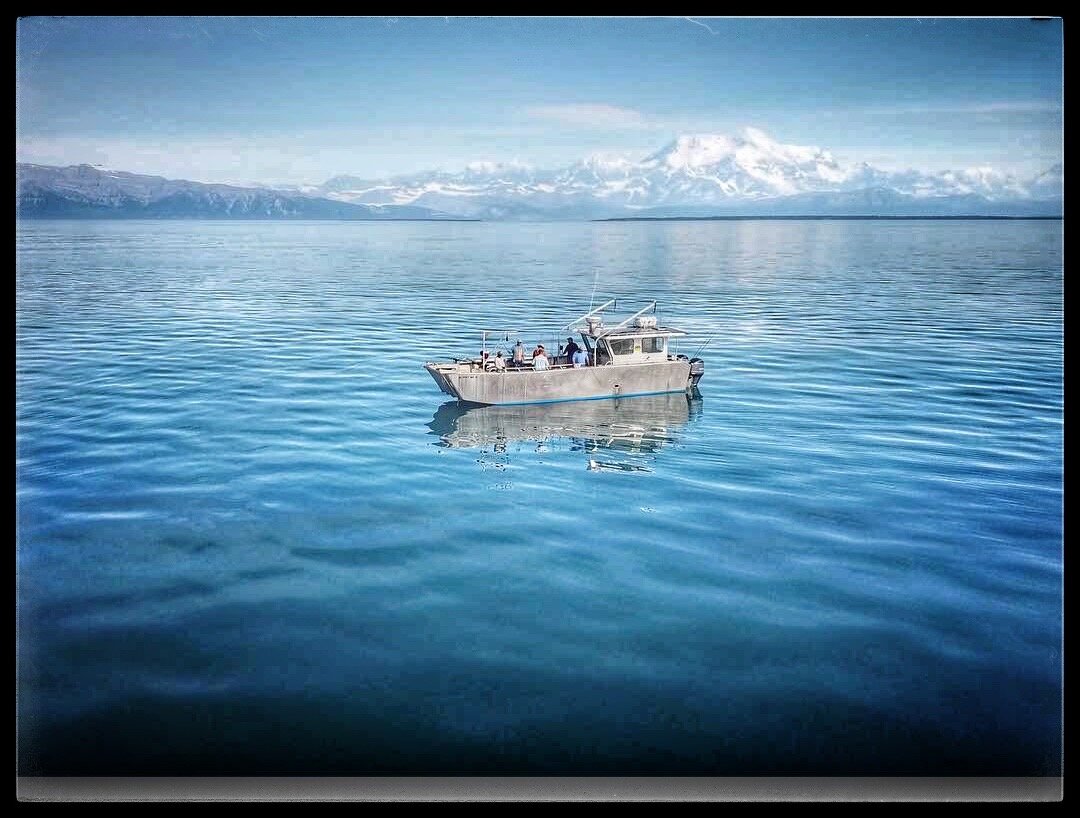
Offshore Fishing Trips
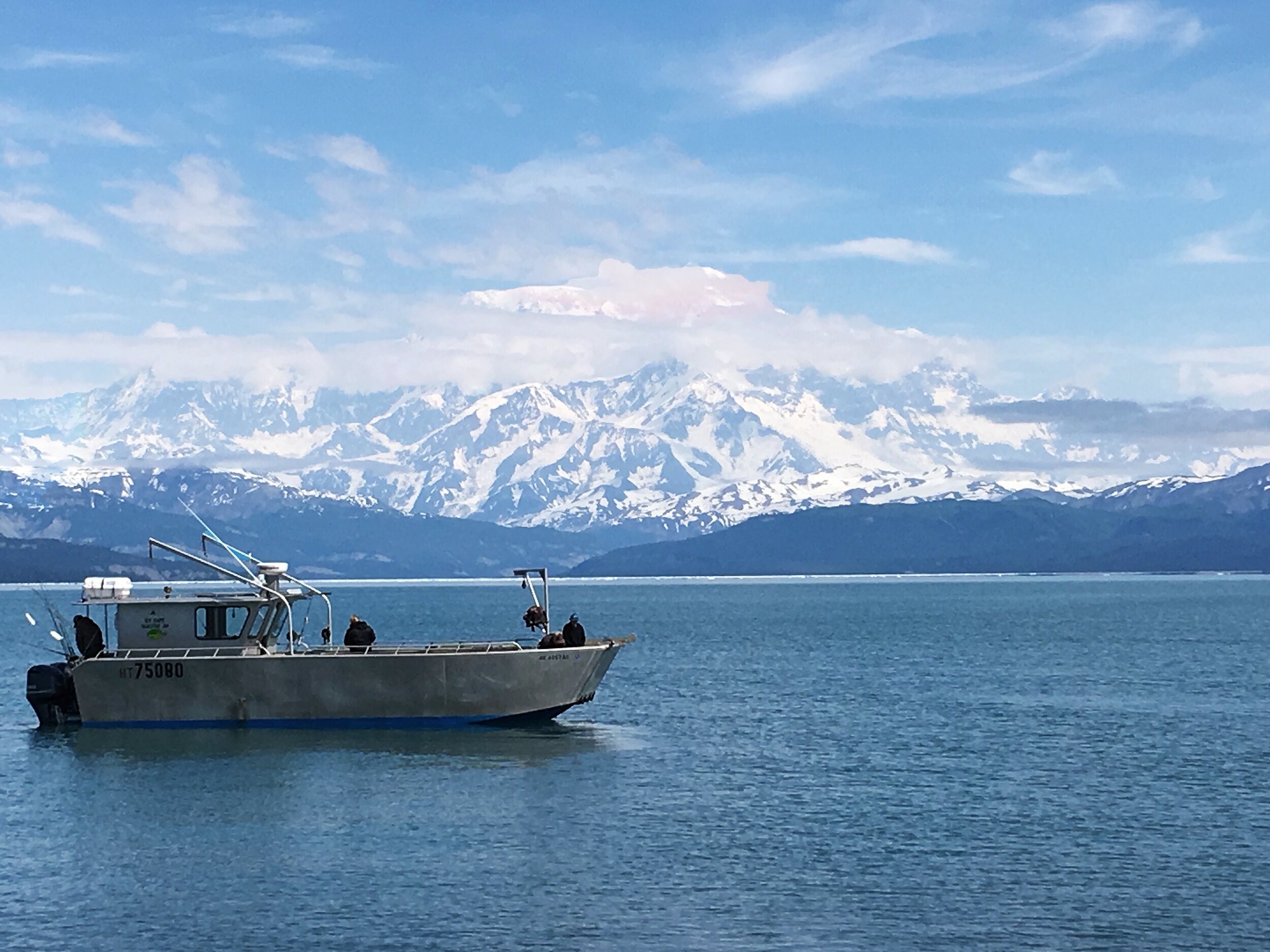
We are located in zone 3A which is a prime migratory path for King salmon, halibut, rockfish and monster lingcod. Catch the biggest lingcod of your life and halibut that will bend your rod like no other. All in 90 feet of water or less!
2024 Season - Saturday to Saturday with 6 full days of fishing = 5,150.00 + tax
June 9-15, 2024 (Full)
June 15-22, 2024 (Full)
June 22-29, 2024 (2 available as of March 10, 2024)
June 29-July 6, 2024 (4 available as of March 10, 2024)
July 6-13, 2024 (Full)
July 13-20, 2024 (Full)
July 20-27, 2024 (Full)
July 27-Aug 3, 2024 (Full)
Aug 3-10, 2024 (2 available as of March 10, 2024)
Aug 10-17, 2024 (sold out)
Includes all meals, daily fishing excursions, guides, all tackle and gear, fish processing and vac sealing - no hidden costs
*We are taking reservations for 2025 (5,250.00 + tax)
The Icy Cape…it’s only us and us alone!
A typical day at the lodge (times are approximate)
7am
Wake up and meet in the main lodge for coffee, home cooked breakfast, and talk about where we will fish that day.
8am
Gear up and load up.
9am
Start boarding the boat for the days fishing adventure.
10am-5pm
Each day differs but typically we will go after the daily King limits then move to Halibut, Lingcod or Rockfish depending on clients desires.
5pm - 6PM
Return to the lodge to unwind, have a beer, glass of wine or beverage of your choice while our staff filets the days catch and prepares for dinner.
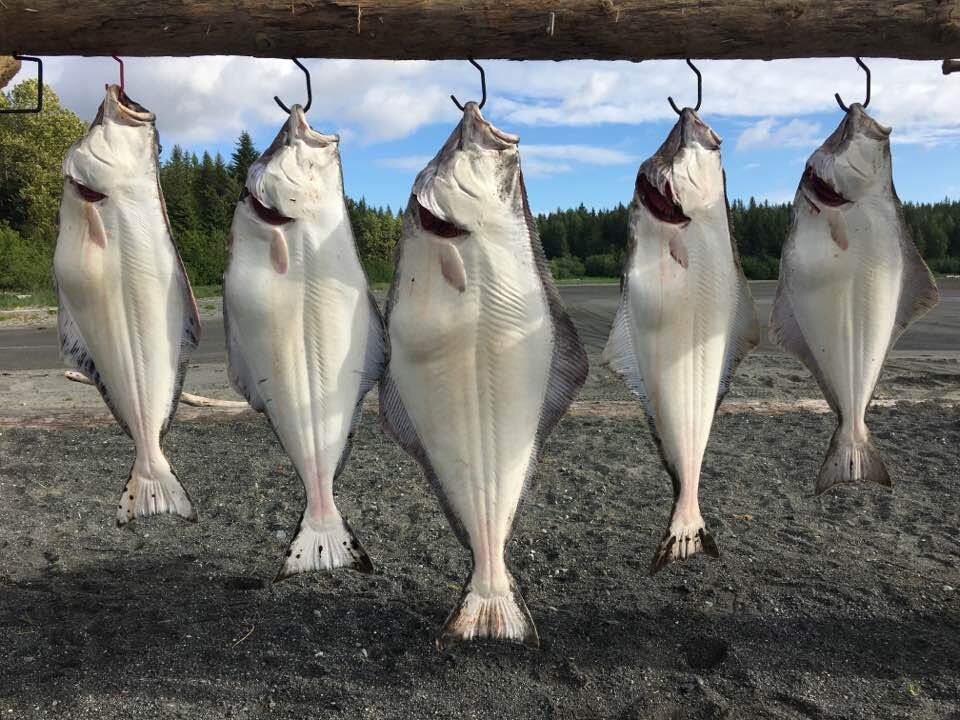
Get to know your halibut
THE BASICS
The North Pacific Halibut, a member of the Flounder Family of fish, are unique because they have a biological characteristic that only the Flounder possesses. When they are first hatched from the egg they swim upright and have one eye on each side of their head like all other species of fish. At about five weeks of age and one inch in length, one eye “migrates” over the top of the head so that both eyes are on the same side of the head. At this time the juvenile Halibut “lays over” on its’ side with both eyes on the upward or top side. As the fish grows, the under side becomes white, the top side becomes a mottled darker variation of colors resembling the sea bottom, and their body flattens into an oval shape: thus the nickname “Flatfish”. The Pacific Halibut, upon becoming a mature spawning adult average about 25 to 30 pounds in weight. The males range upward to about 60 pounds and the females range upward to about 600 pounds in weight. Huge Pacific Halibut, can grow to a length of over 8 feet and a width of over 5 feet. They have a button-sized calcified deposit in their head called an Otolith or “Ear Bone” that forms an annual growth ring. The age of an individual fish can be determined by counting the number of growth rings as you would age a tree. Their snow-white flesh makes excellent table-fare. This makes them a very popular game-fish species with deep-sea fishermen.
Halibut spawn at depths of 600 to 1,500 feet from November through March. Female halibut release anywhere from a few thousand to 4 million eggs, depending on the size of the fish. About 15 days later, the eggs hatch and the larvae drift with deep ocean currents. In the Gulf of Alaska, the eggs and larvae drift in a counter clockwise direction along the coast. As the larvae mature, they move higher in the water column and ride the surface currents to shallower, more nourishing coastal waters. Although age at maturity varies over time, about half of male halibut are sexually mature by 8 years of age, while half of the females are mature by age 11. They can attain a lifespan of over 30 years. Female halibut grow faster and are typically larger than males of the same age. Most halibut taken in the sport fishery are 5-15 years old. Males rarely reach 100 pounds. The larvae start life in an upright position like other fish, with an eye on each side of the head. When the larvae are about one inch long, the left eye moves over the snout to the right side of the head. At the same time, the coloration on the left side of the body fades. The halibut end up with both eyes on the pigmented (olive to dark brown) upper side of their body, while their underside is white. By the time they are six months old young halibut settle to the bottom in shallow, nearshore areas.
Halibut are predatory feeders that eat almost everything that swims in the sea. They feed on plankton during their first year of life. Young halibut (1-3 years old) feed on euphausiids (small shrimp-like organisms) and small fish. As halibut grow, fish make up a larger part of their diet. Besides pollock, sablefish, cod, and rockfish, large halibut also eat octopus, herring, crabs, clams, and smaller halibut. They are the largest of all flatfish with some exceeding 400 lbs. The Alaskan state record is 459 lbs caught in 1996 in Unalaska Bay.

